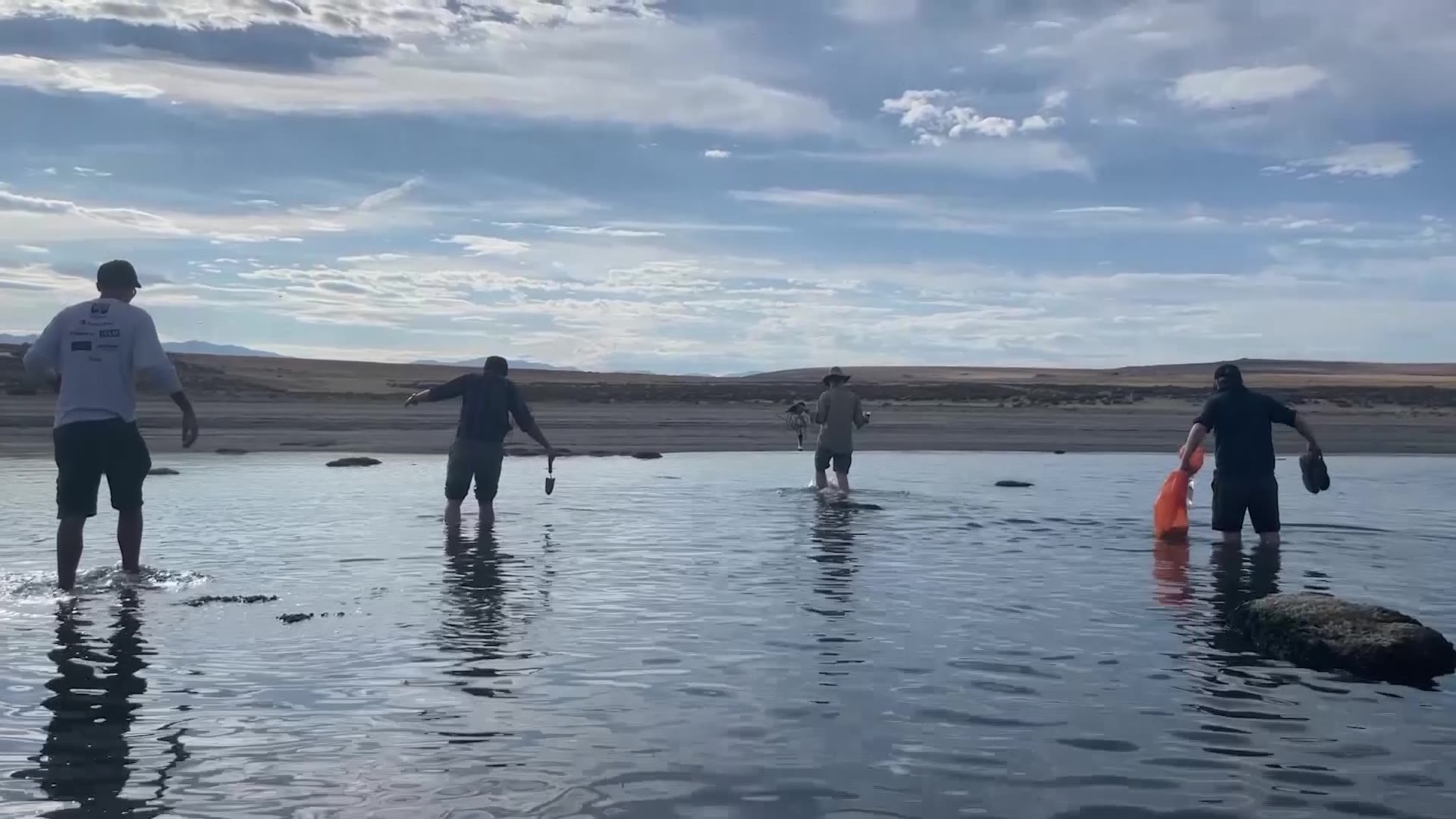Biologist says Great Salt Lake’s ecosystem is near collapse
Sep 9, 2022, 4:05 PM | Updated: 4:19 pm
This article is published through the Great Salt Lake Collaborative, a solutions journalism initiative that partners news, education, and media organizations to help inform people about the plight of the Great Salt Lake—and what can be done to make a difference before it is too late. Read all of our stories at greatsaltlakenews.org
ANTELOPE ISLAND, Utah — A biology professor said the Great Salt Lake’s ecosystem is dangerously close to collapsing, creating a risk for all of Utah.
“The water is just full of dead brine fly larvae and pupa; just death everywhere. It’s terrible,” said Bonnie Baxter, a biologist, and director of the Great Salt Lake Institute.
Baxter has reason to be pessimistic about the prospect of a healthy, thriving Great Salt Lake.
“We are at the tipping point for this ecosystem,” she said.
Watch my story tonight on @KSL5TV news at 6pm – The latest in a series about the shrinking Great Salt Lake. I ventured out to Antelope Island with Bonnie Baxter, director of the Great Salt Lake Institute. Pretty fascinating take on the biology of the lake that is very much alive https://t.co/jLo7qhBR8Z
— Dan Spindle KSL (@DanSpindleKSL) September 1, 2022
Baxter has studied this body of water for more than two decades, her take on the lake really holds water.
A few years back she co-authored a dark, satirical obituary of our massive saline staple, penning this untimely cause of death. “The combination of terminal dehydration and high fever” killed the Great Salt Lake, she said. “Had we … adequately fund[ed] her healthcare in time, we may not be mourning her death today.”
“Since the lake has been in this perilous state, I’ve been getting emails and letters and phone calls constantly,” Baxter said.
Looking from the ever-changing edge of the Great Salt Lake at Buffalo Bay toward Antelope Island itself, you can see major issues.
Lake Bonneville Storymap: 30,000 years of lake levels in the Bonneville Basin https://t.co/F0ZEOyIYkO
— Utah.gov (@UtahGov) August 30, 2022
A line shows what is leftover of the remnants of the brine flies and effective cocoons. They mark where the water level would have been.
For the better part of the last decade, we have lost hundreds and hundreds of yards to what is now the current edge of the Great Salt Lake.
“As water evaporates, the salt stays behind and it gets more and more concentrated and it starts threatening the ecosystem that way,“ Baxter said.
In a place where water literally is life, it’s going to take a change in the way we think about conservation.
“Why do we need to put our water down into the bottom of the Great Salt Lake anyway? Well now, science is telling us there are some reasons,” Baxter said.
“We enjoy coming out here,” Miriam Oliver said. “We enjoy bringing people out here.”
She’s lived in Utah for almost 15 years. Miriam brings family and friends to visit the lake often and was shocked to see the growing distance between the parking lot and the beach that’s seemingly creeping its way off toward a distant horizon.
“With that, you do have to worry about how much water we are using,” Miriam said.
As water sample after sample returns the same dire results of an unsustainable level of salt, is it too late? Is the death of the lake imminent like Baxter’s obituary foretold?
She says one thing could take the lake off life support. “The one thing is the big thing. Get more water to the lake and there’s a lot of things that have to happen to do that.”
More water is a simple solution but not an easy one.
More than a dozen laws governing our water use in Utah passed this year and the U.S. Senate passed a bill that will look at bringing water from other sources through pipelines.
Baxter thinks the solution starts here and the time to save the lake’s life is now.
“I believe there’s enough water in the watershed to get water to this lake. I do believe that,” she said. “I would be willing to write to change the obituary to a lifetime achievement award if we see progress in five years.”
Instead of closing the coffin on this critical resource, we can celebrate the next chapter of the lake and a job well done.
Just not yet.














